
This is a story that picked up a lot of chatter over the past few years, and there’s a ton of misinformation out there about it–largely because the story has never been reprinted, nor published in English, so people would see fragments of it, hear part of the story behind it, and then jump to conclusions. But despite the cover above, this issue of EL SORPRENDENTE HOMBRE ARANA, #128, did not feature the actual wedding of Peter Parker and Gwen Stacy.

So let’s start at the beginning. As the Marvel Age of Comics got under way, one of the ways in which publisher Martin Goodman would bring in ancillary revenue was by licensing reprint rights to the comic book stories Marvel was producing to other countries all around the world. In Mexico, the Marvel books were initially published in Spanish by La Prensa, and their translations of AMAZING SPIDER-MAN became incredibly popular (so much so that there’s still a huge older fan base for the Wall-Crawler in Mexico to this day.)

In fact, EL SORPRENDENTE HOMBRE ARANA was so popular that La Prensa began issuing it on a biweekly basis. To keep up with the demand for material, they incorporated reprints of the Ant-Man/Giant-Man series into occasional issues, as they were eating through the backlog of American-produced material at a rate faster than it was being produced. (For the record, Ant-Man was Hombre Hormiga, while Giant-Man was El Gigante–thus losing the gag in the transition from Ant-man to Giant-Man due to the vagaries of translation.)

Every so often, the lack of new material would cause La Prensa to reduce the release schedule of the popular title back to monthly again, which wasn’t ideal for such a top-seller and money-maker. This was far from ideal–and so by the end of the 1960s, the editors at La Prensa had an idea as to how to rectify matters.

The Editorial Director of La Prensa flew to New York and petitioned Marvel and editor Stan Lee to allow him to commission new Spider-Man stories from local Mexican talent, stories that they would insert in-between reprinted American stories. Despite the fact that there would turn out to be virtually no oversight on this project at all, somehow La Prensa was granted this right. Presumably, there was some additional money in it for Marvel, and it seems like Lee and company didn’t much care about the results, since nobody living outside of Mexico would ever see them. (This wasn’t really true, as La Prensa had distribution all throughout Spanish-speaking Latin America, and even got some of their books limited release into Spanish-speaking American communities at one point)

The artist selected to draw these new stories was Jose Luis Gonzales Duran. Apparently, Duran was commissioned by La Prensa to draw up sample pages prior to that fateful meeting with Marvel, so that the agent from la Prensa could show Lee and company just what they were proposing visually. Duran was a talented illustrator, and in drawing new Spider-Man material, he often swiped from whatever American comics he could get his hands on. This story is filled with swipes from John Romita, Gil Kane, Jack Kirby and others. But he was able to synthesize a respectable approximation of the American style. The writer of most of the new stories that would be generated was Raul Martinez

Jose Luis Duran set to work, and the first all-new Mexican Spider-Man story saw print in EL SORPRENDENTE HOMBRE ARANA #123-125, in which Spidey fought a character called Hombre de Hierro (Iron Man, strangely enough), most of whose figures were swiped from Neal Adams Deadman stories from STRANGE ADVENTURES. This three-part story was sandwiched in-between issues that reprinted AMAZING SPIDER-MAN #120 and #103, so it was inserted painlessly into the run. Mexican readers were happy, La Presna was happy, Marvel was, if not happy then largely oblivious. So everything was fine, right?
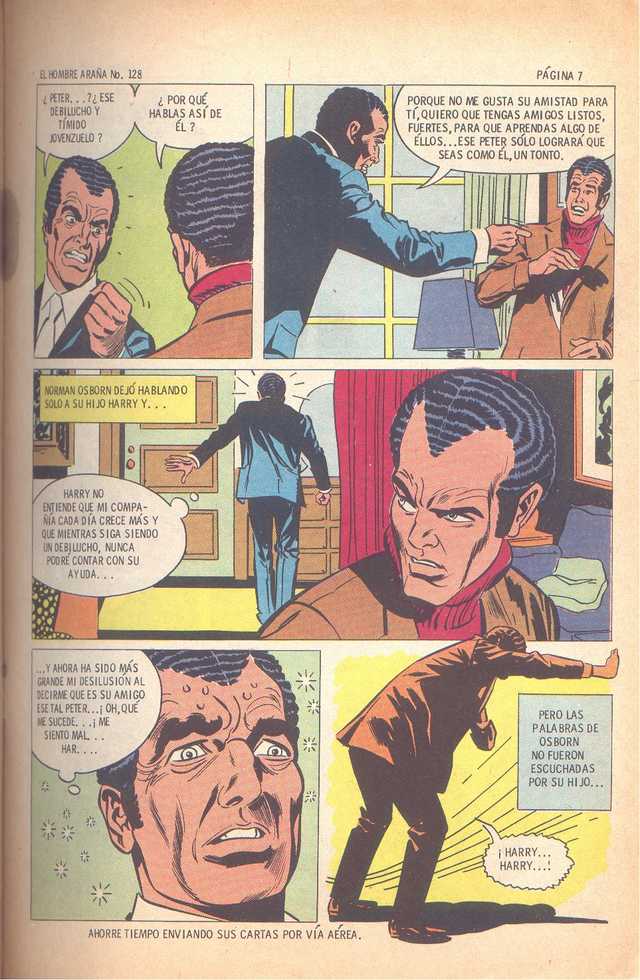
Well, not quite. Because right at about that time, a major development was taking place in the American AMAZING SPIDER-MAN series. Incoming writer Gerry Conway along with mainstay artist and series caretaker John Romita had decided that the series needed to be shaken up in a major way. And so they made the decision to have Spider-Man’s arch-nemesis the Green Goblin kill off Peter’s longtime romantic interest, Gwen Stacy.

It was a shocking and game-changing development for the wall-crawler, and a seminal moment in the history of comics. To some, it signifies the end of the Silver Age of Comics and the advent of the somewhat-darker Bronze Age. And it definitely impacted on the series and the character for yeas thereafter. It also shook up the readership, and gave every subsequent battle that Spider-Man was in a feeling of anything-goes possibility–if Marvel was willing to have both Gwen Stacy and the Green Goblin die, then what wouldn’t they do? It was a transgressive move.

So transgressive and so traumatizing was it, in fact, that the editor at La Prensa didn’t think that his Latin American audience would accept it. Gwen Stacy was an extremely popular part of the series in Mexico, and in the style of Mexican comics of the period, which were always just a little bit more risque than their American counterparts, she was often featured prominently on the covers to the new stories, typically with her ass sticking into the camera or provocatively attired. (She was Durna’s favorite character to draw, and so he featured her often on his new covers, often in situations having little or nothing to do with the stories within.) La Prensa’s readers, it was determined, would not be happy if Gwen Stacy was killed off.
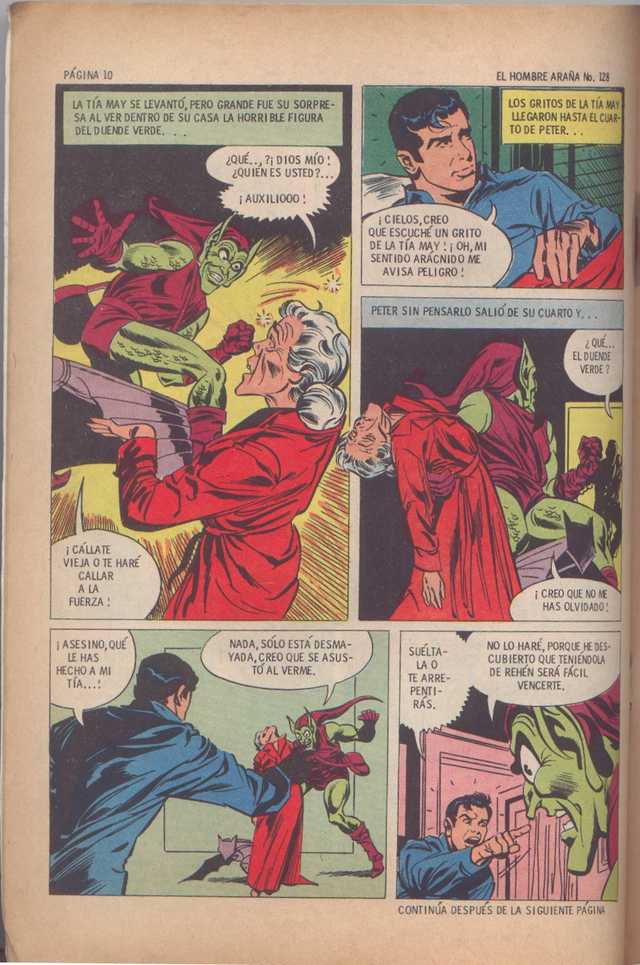
And so, for a time, La Prensa stopped printing the American stories altogether, relying on their new material to fill the pages with additional Spider-Man adventures, adventures still set during a period when Gwen was still alive. For a year or two, the clock stopped for readers in Mexico and throughout Argentina, Chile, Uruguay and Peru. In all, 45 new adventures were created published.

The thing is, this issue of EL SORPRENDENTE HOMBRE ARANA, #128, came out before much of this had happened. It was a relatively early example of a new story created by Duran. But the fact that its cover image featured Peter Parker and Gwen Stacy getting married (an event in the story that’s simply a dream-nightmare induced by the Green Goblin’s hallucinogenic gas) combined with the fact that La Prensa had made new stories to avoid printing the death of Gwen Stacy led to the Urban Legend that they actually married the couple in those stories. Not so.
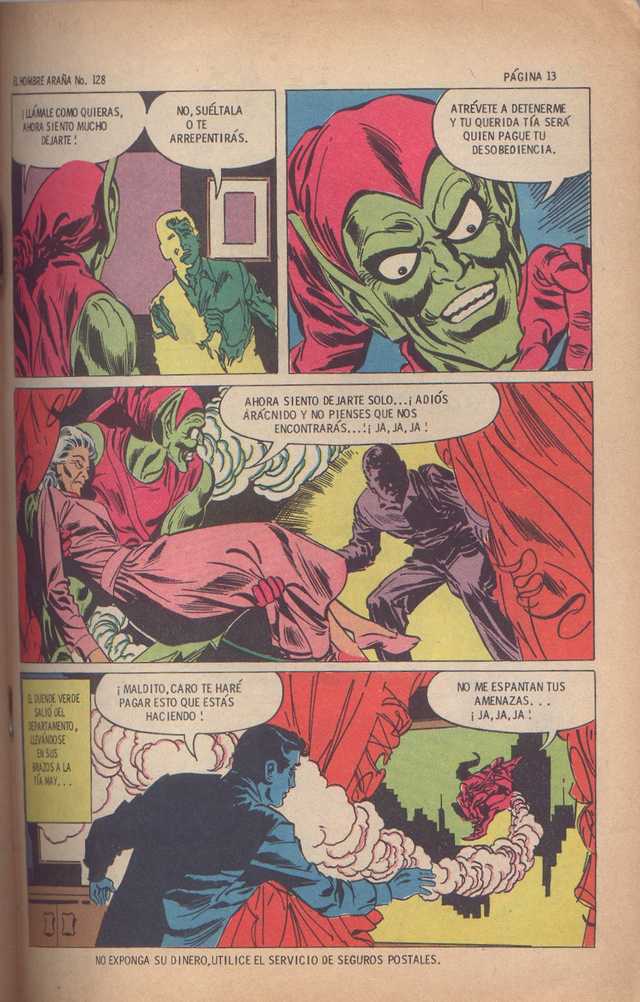
It was also all a bit of a pyric effort. in that, by 1974, La Prensa had gone out of business and let their contracts lapse. The final issue of LA SORPRENDENTE HOMBRE ARANA was #185. However, the new publisher in Mexico, OEPISA (Organización Editorial de Publicaciones e Impresiones SA) acquired the license to continue publishing Spider-Man for a Mexican audience, and they engaged Duran to continue on as the line’s art director. They took some liberties of their own, without informing Marvel, publishing locally-created stories of Iron Fist as well during the martial arts boom, and also originating La Chica De Kung Fu (The Kung Fu Girl) which was set up as an unauthorized spin-off of Marvel’s MASTER OF KUNG FU, which they were also reprinting.
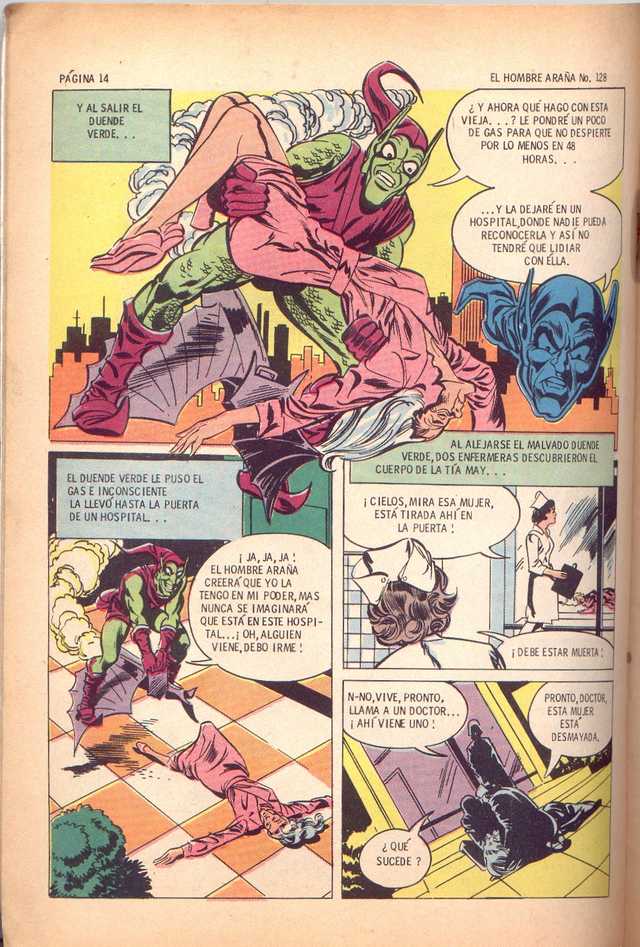
They also created an entirely separate continuity for Spider-Man in a junior version. Called Arañita Super Histories, it was aimed at a younger audience and featured kid versions of Peter Parker, Gwen Stacy (called Gwendy here) and their friends in adventures supposedly set during their youth. In effect, it was a Spider-Man version of Superboy.
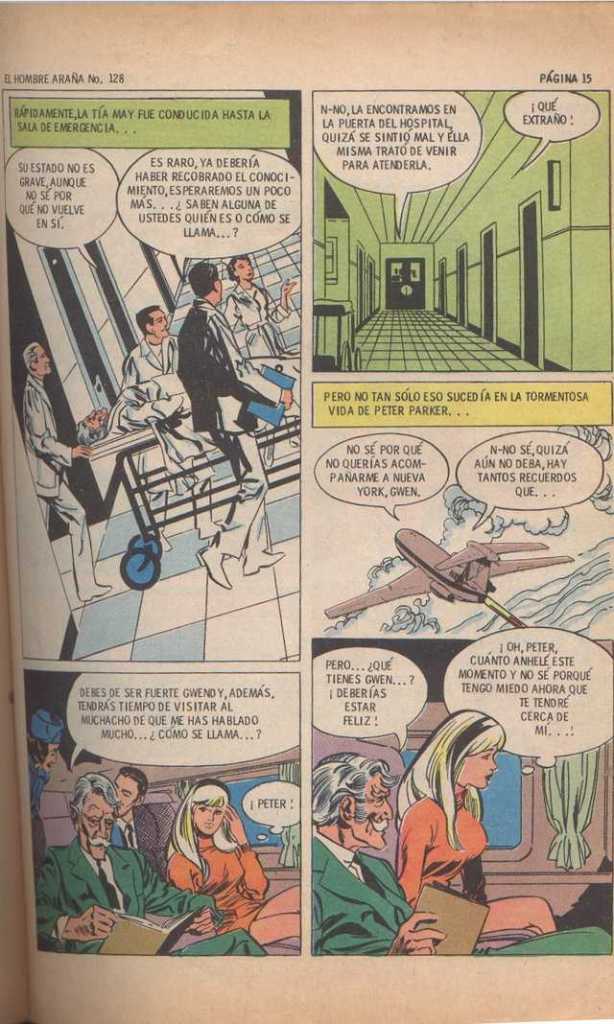
By 1979, the localization experiment came to an end, and no further Mexican Spider-Man stories were produced for several decades. And of course, none of these new stories have been much seen outside of Mexico, nor have any of them been translated into English. It’s uncertain whether any workable reproduction materials exist for any of them outside of the published comics themselves.
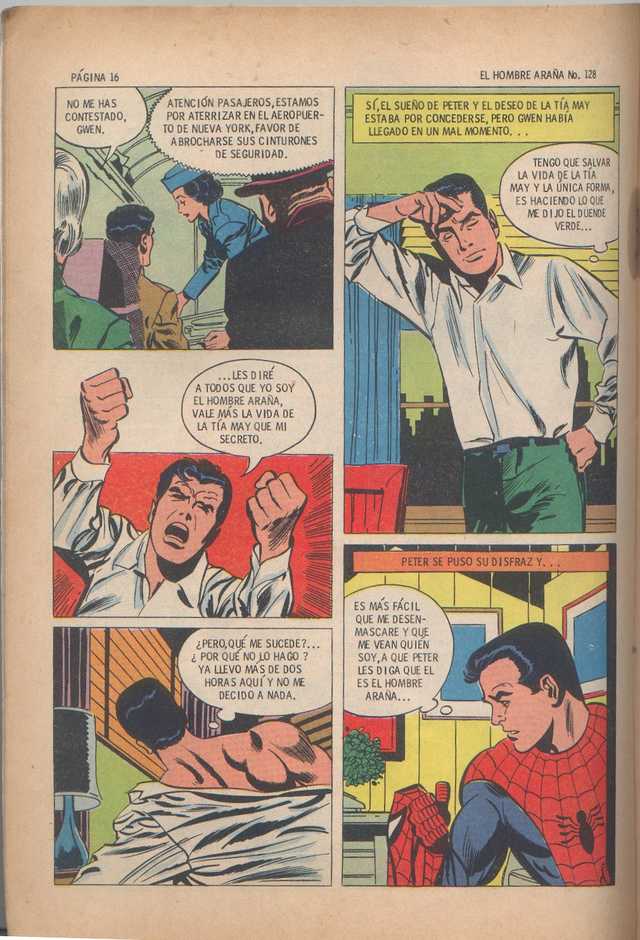

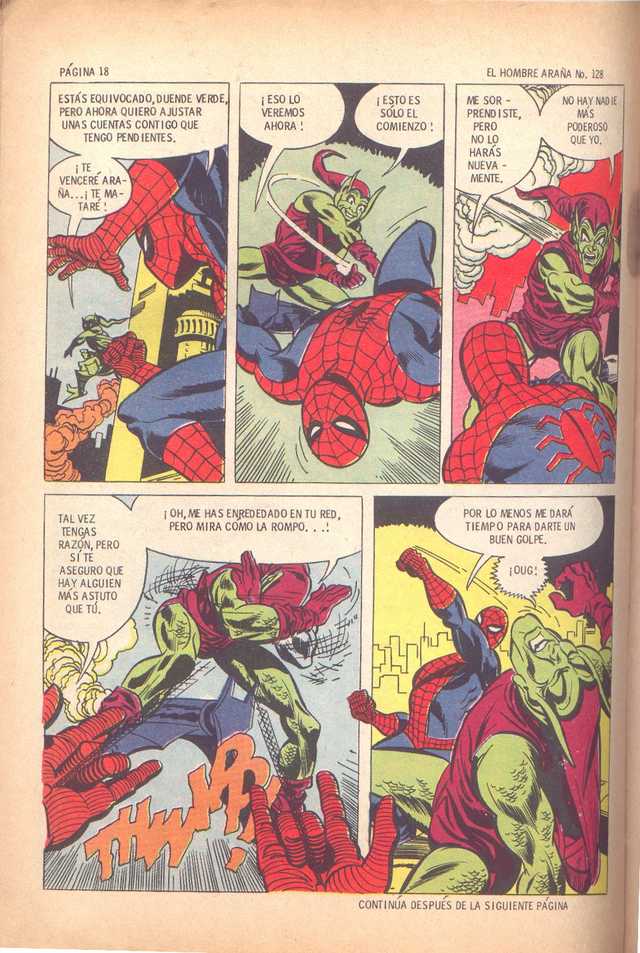
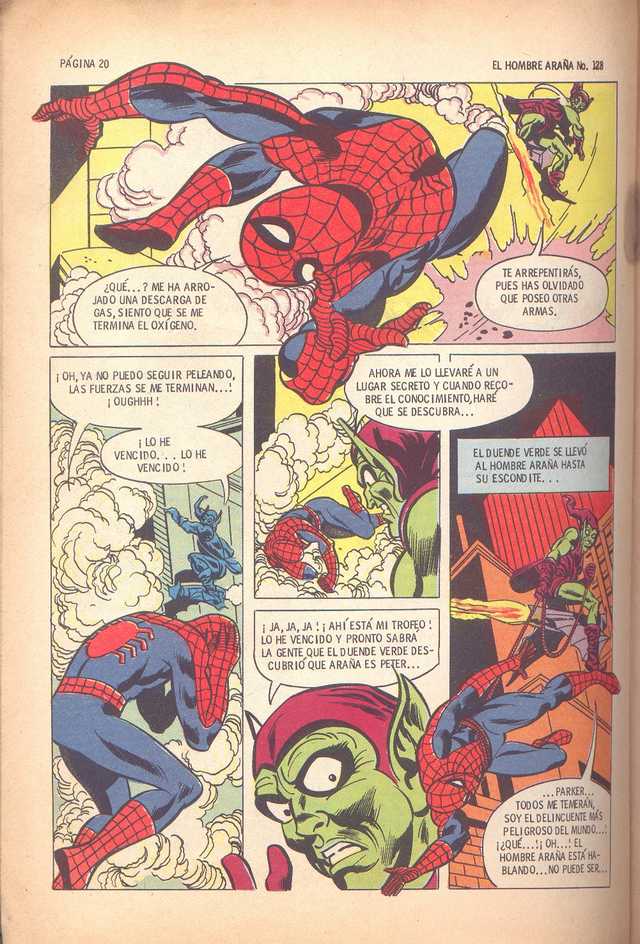

This single page hallucination is all the story gives us of the wedding of Peter Parker and Gwen Stacy, apart from the symbolic splash page image right at the top.
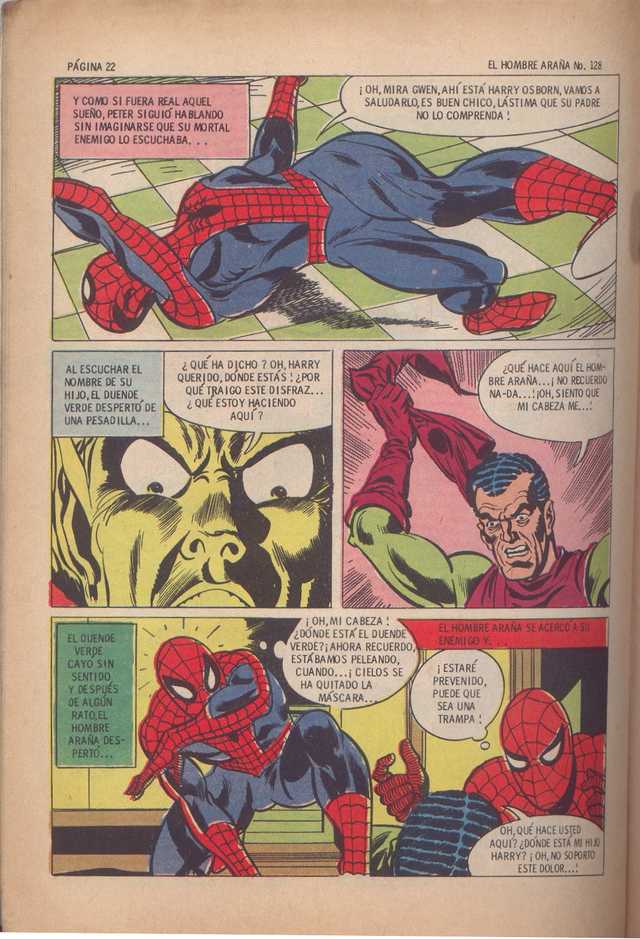
The rest of the story concerns Norman Osborn once again regaining the memory of the fact that he’s secretly the Green Goblin and attacking Peter’s Aunt May, putting her in the hospital. It’s Norman’s love for his son Harry that snaps him out of his Goblin persona once more, allowing Spidey to claim the victory.
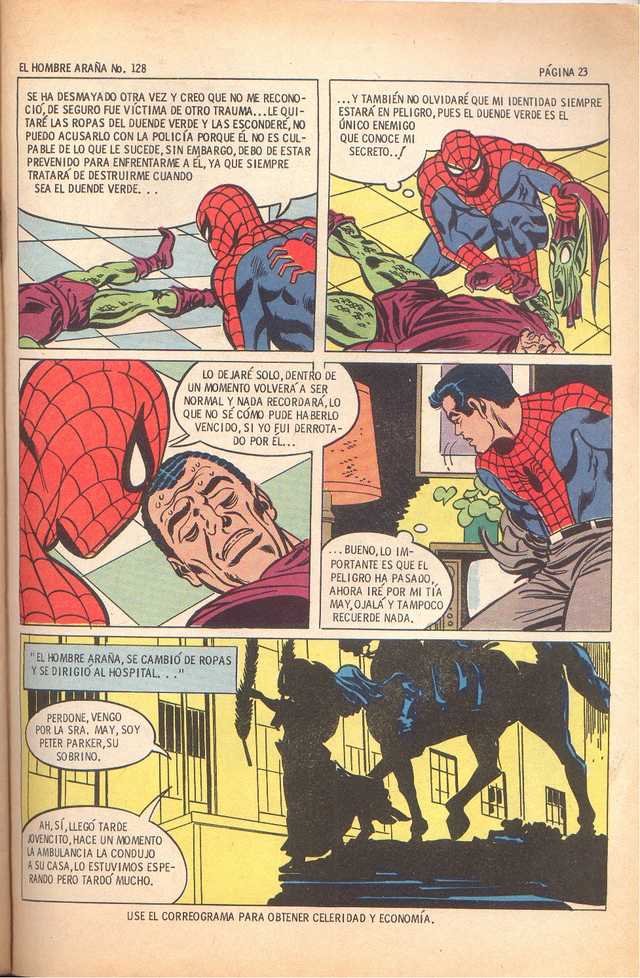

Looks to my eye like there may have been another image there on that final tier of the last page here, which was swapped off by a lesser hand for some reason. That lettering is especially nasty and unpolished. For those keeping track, this story would have taken place between AMAZING SPIDER-MAN #104 and #105, right at the very tail end of Stan Lee’s tenure as writer.


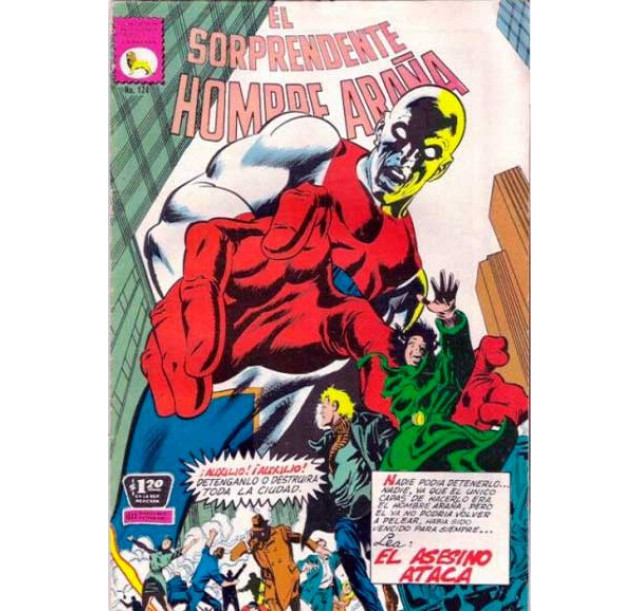






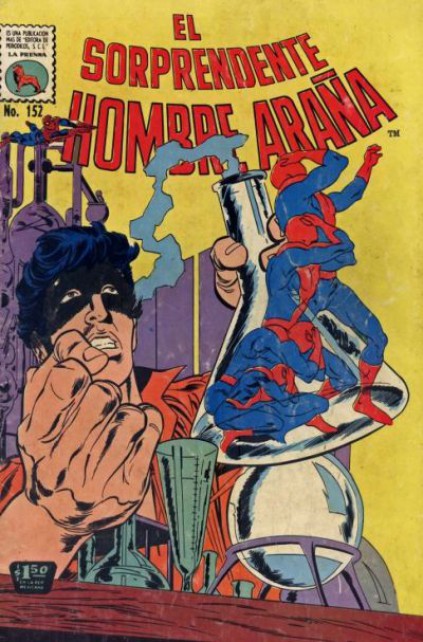
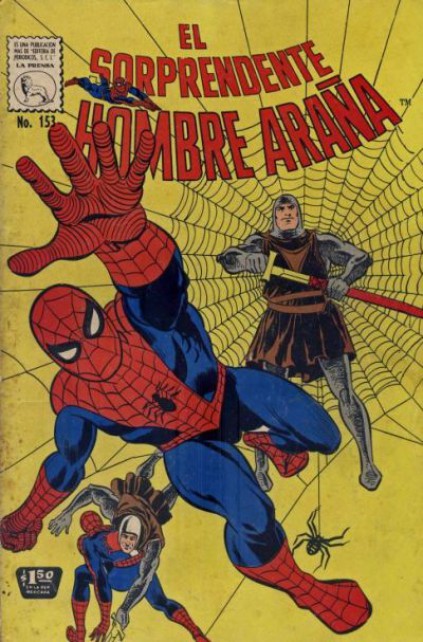

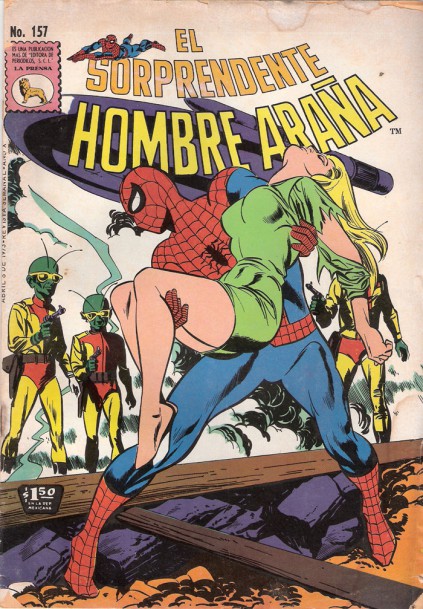

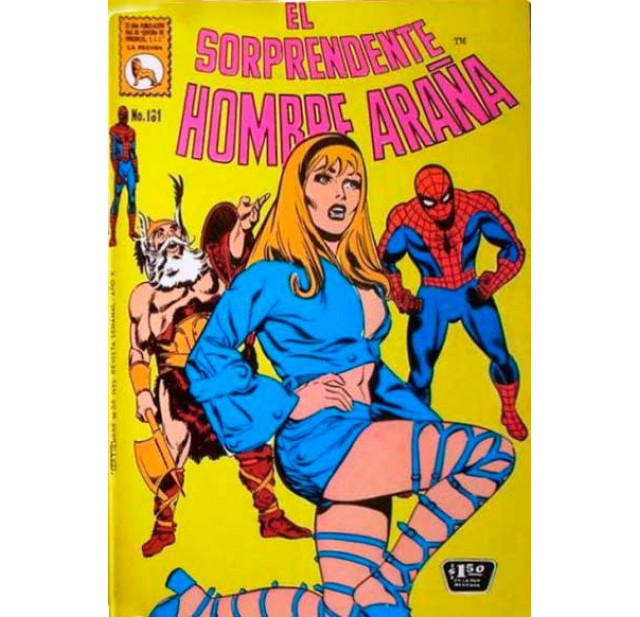
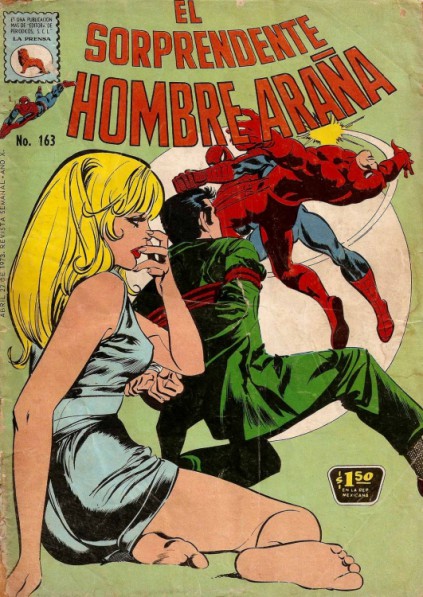









Even if they don’t have a real wedding, I want a translated reprint anyway!
Plus IRON FIST, SPIDER-BOY and LA CHICA DE KUNG FU…
LikeLiked by 1 person
If you’re willing to drop a hundred bucks or so, your wish can be granted! http://crustymud.paradoxcomics.com/?p=3002
LikeLike
A similar situation of the local reprint comics running at a faster pace than production of stories in the US occurred in the 1970s with at least *three* reprint series here in the UK. One of these featured MASTER OF KUNG-FU reprints and was launched when there was hardly any back-inventory in order to catch the Kung-Fu craze. In that case material appears to have been created that first appeared in the UK comics before publication in the US. A similar situation occurred with STAR WARS, but there a lot of that material – by Archie Goodwin and Carmine Infantino no less – doesn’t appear to have seen print in Marvel collections until the past few years. Finally, there was PLANET OF THE APES. In that case when Marvel ran out of material for the UK to reprint the Killraven series was reworked with Killraven becoming Apeslayer and the tripods being controlled by apes.
LikeLiked by 1 person
The MASTER OF KUNG FU situation has been reported as why Steve Englehart left the book so early — he wanted to do a bi-monthly series he could spend time and thought on, and the popularity of the book (particularly overseas) meant that there was huge pressure to fill the monthly series, plus the GIANT-SIZE and DEADLY HANDS.
This may also explain why Doug Moench’s early issues have such perfunctory plotting — Shang-Chi is wandering around somewhere and is attacked by the Si-Fan so he beats them, bam, that’s the story — he simply didn’t have time to slow down and think until he’d fed the maw of three series. Once he got on top of that, he could do those espionage epics the book became famous for, but early on it was just “get something to the artist and get him going! And do the same for multiple artists, we’re late!!”
LikeLiked by 1 person
I’ve always been intrigued by how drastically things can be altered for overseas reprinting. My favourite example is when Captain Marvel was completely removed from a Hulk v Captain Marvel battle:
cbr.com/hulk-vs-captain-marvel-missing-captain-marvel/
LikeLiked by 1 person
The first time Secret Wars was published in Brazil it was adapted to the “brazilian chronology” used by Editora Abril, so many characters were removed/replaced in the story. More about that, in portuguese, here: https://www.marvel616.com/2019/10/grandes-historias-da-marvel-no-brasil.html
LikeLiked by 1 person
A huge Vampirella swipe on the #148 cover.
Would love a translated reprint of the original material.
LikeLiked by 1 person
The story behind these comics is a bigger mess than most of us realized. I tried to sort it out in this blogpost– originally done in February 2019 and recently updated and corrected: http://crustymud.paradoxcomics.com/?p=1723
LikeLiked by 1 person
Over Peter’s left shoulder in the splash page, it looks like Veronica Lodge from Archie Comics scored an invite!
LikeLike
That’s a slightly off-model Mary Jane with discolored hair. She shows up on p21 as well.
LikeLike